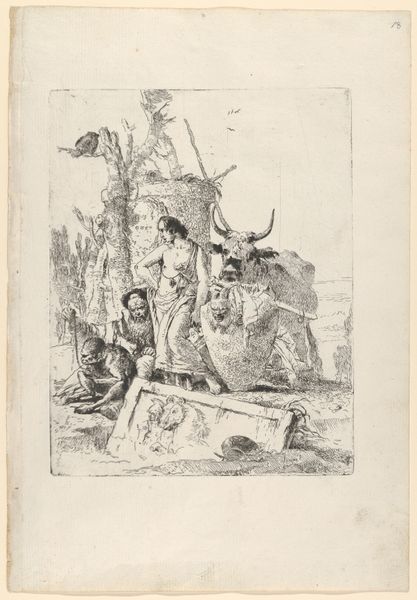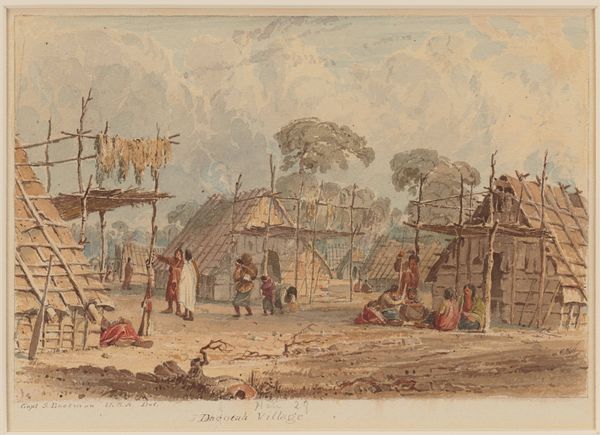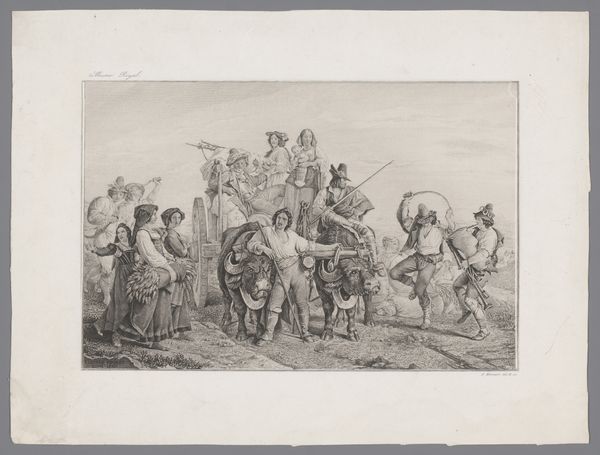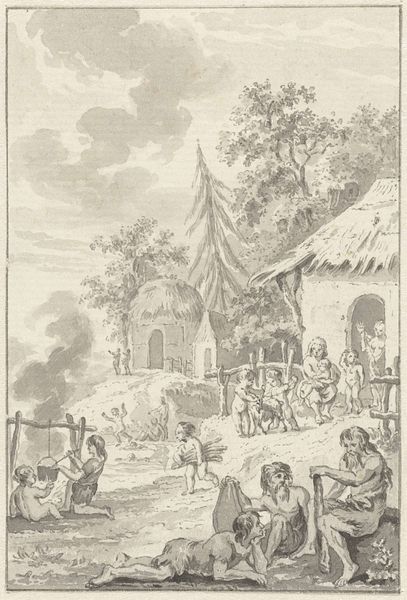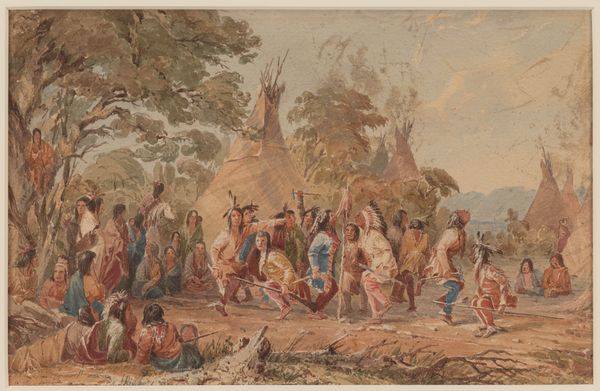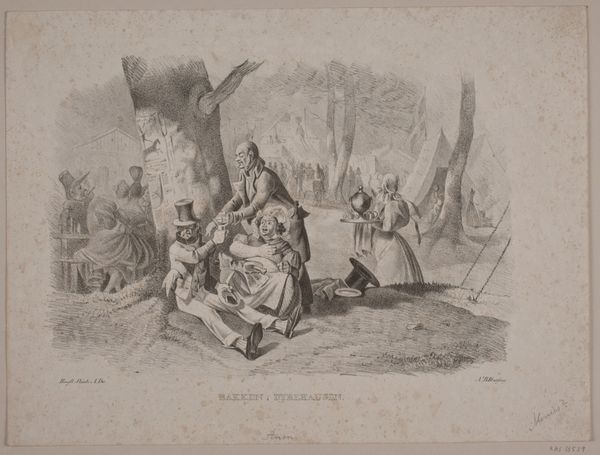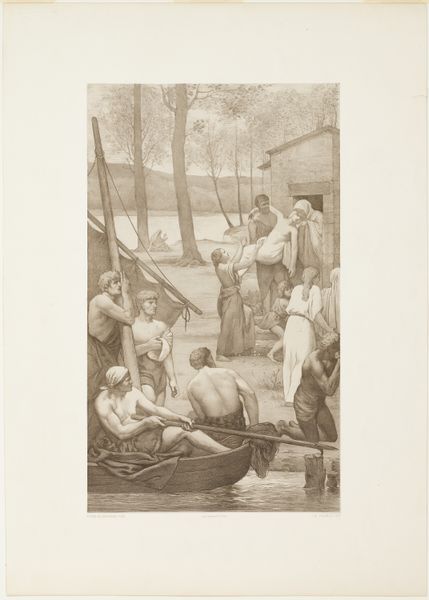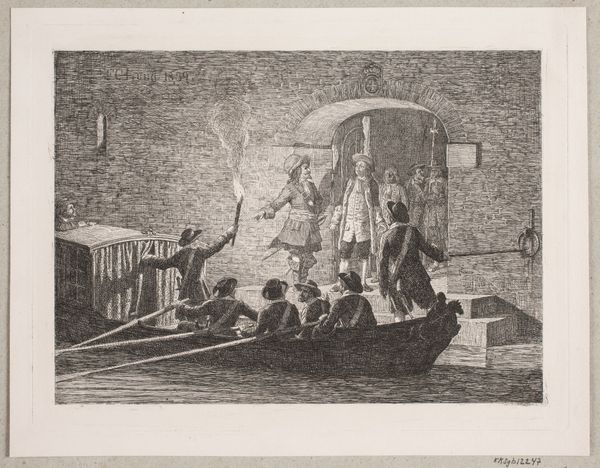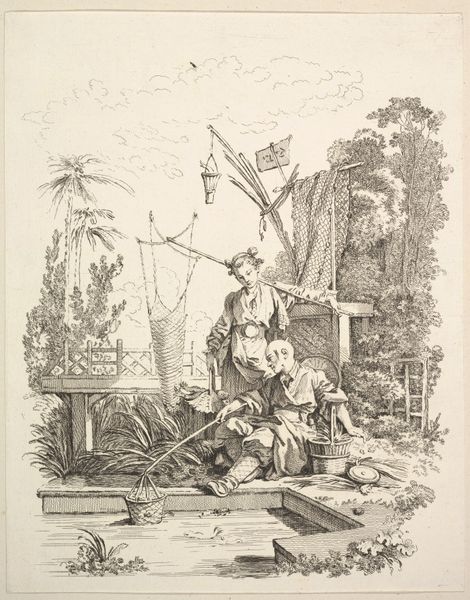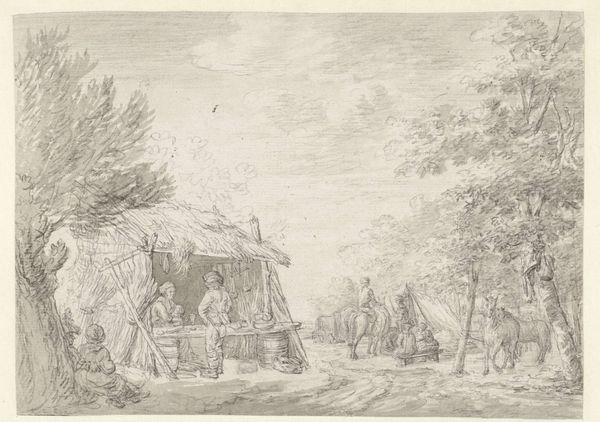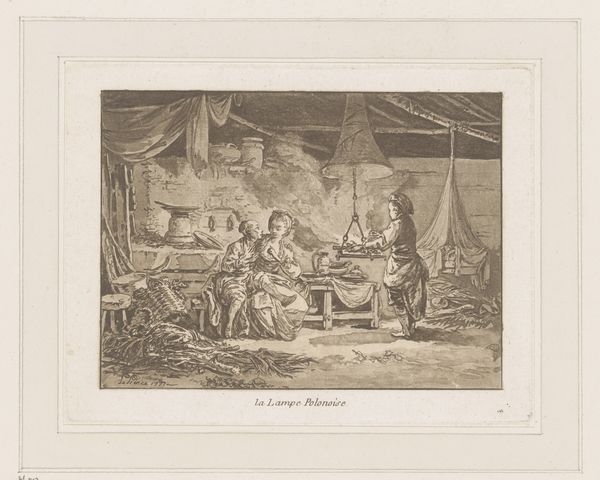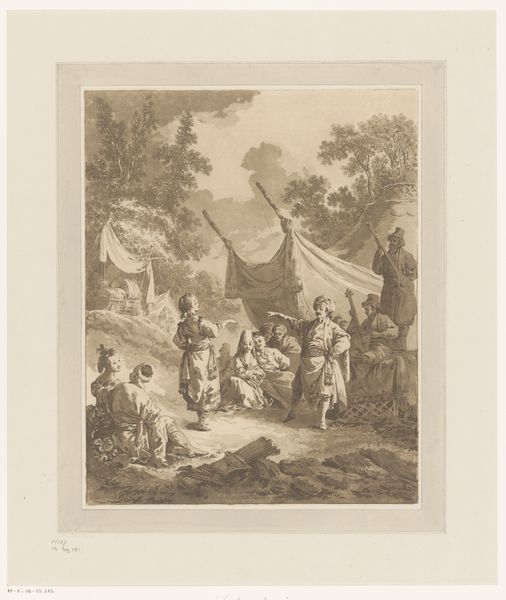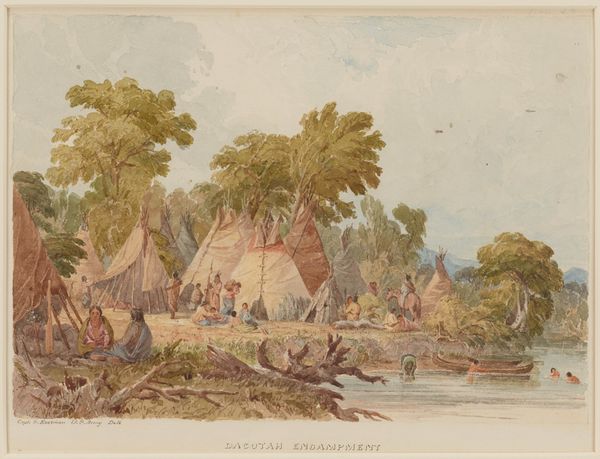
watercolor
#
narrative-art
#
landscape
#
figuration
#
oil painting
#
watercolor
Dimensions: 7 × 5 1/2 in. (17.8 × 14 cm) (image)21 1/2 × 17 9/16 × 1 1/8 in. (54.6 × 44.6 × 2.9 cm) (outer frame)
Copyright: Public Domain
Seth Eastman’s watercolor, "Mourning for the Dead," presents a poignant scene composed with a muted palette. The watercolor evokes a sense of melancholy, with a group of figures gathered around a scaffold, their postures suggesting grief and ritual. Eastman structures the composition around the scaffold, a stark geometric form that contrasts with the organic shapes of the figures and the landscape. Note the use of light and shadow, particularly how the pale light illuminates the figures, drawing our attention to their expressions and gestures. The texture of the watercolor adds a layer of depth, creating a visual language that speaks to loss and remembrance. The artwork invites us to consider the semiotics of mourning. The scaffold, the fire, and the figures' actions all function as signs within a cultural context. These signs point to deeper meanings related to death, spirituality, and community. It destabilizes the romanticized image of indigenous peoples often presented in art. It prompts reflection on how societies grapple with mortality. Eastman's formal choices serve not only aesthetic purposes but also engage with broader cultural and philosophical themes. The artwork is an arena for continuous interpretation and re-evaluation.
Comments
minneapolisinstituteofart almost 2 years ago
⋮
This nocturnal scene reveals mourners tearing their clothes and cutting their hair in sympathy for a loved one. A couple of knives just catch the glint of fire light. The burial ground is likely Pilot Knob, overlooking the Minnesota River. The site captivated Seth Eastman and he painted it several times, but this scene may be the most emotional. The body of this loved one has been tied to a scaffold, safe from predators, and furnished with provisions. When the ground warms up, it may eventually be buried. This watercolor, one of 35 works on paper by Eastman in Mia’s collection, was the basis for an illustration in Henry Rowe Schoolcraft’s massive "Historical and Statistical Information Respecting the History, Condition, and Prospects of the Indian Tribes of the United States" (Philadelphia: Lippincott, Grambo & Co., 1851-57).
Join the conversation
Join millions of artists and users on Artera today and experience the ultimate creative platform.
